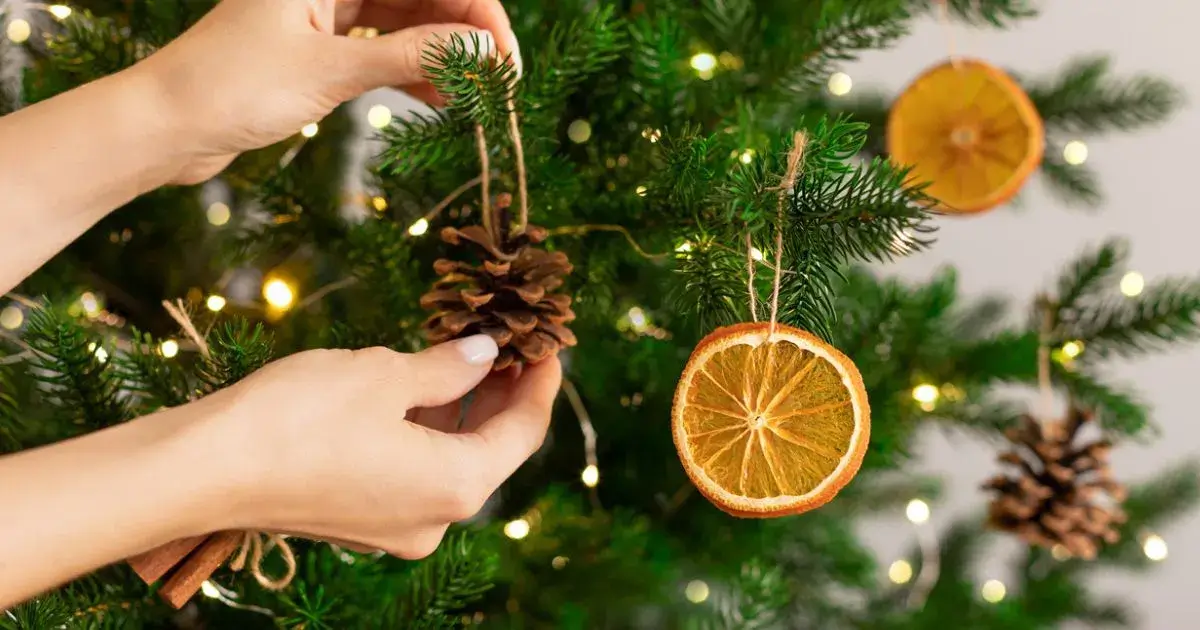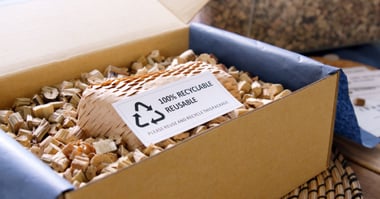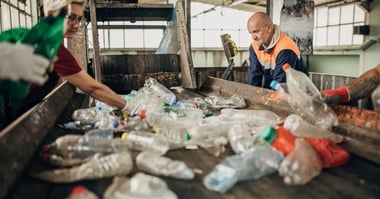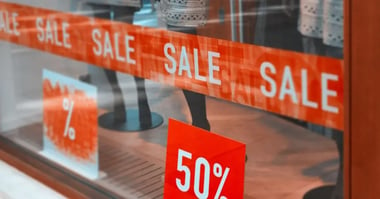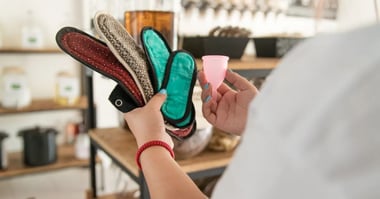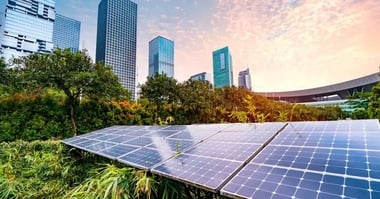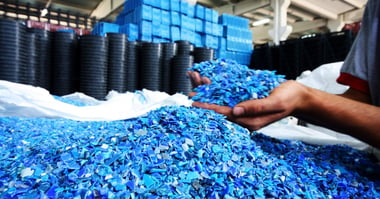
Beth Howell
Beth has been writing about the environment and climate change for over four years now – with her work being featured in publications such as The BBC, Forbes, The Express, Greenpeace, and in multiple academic journals.
As population figures continue to rise, and more people become accustomed to single-use products, the world’s growing consumption is wreaking havoc on the planet.
We’re pulling natural resources from the Earth at record rates and burning fossil fuels for production — not to mention levels of waste are continuing to pile up.
This is especially true during the notoriously wasteful Christmas period, where expenditure on toys, games, and clothing is estimated to increase by about 20% (according to a 2023 Guardian report).
To combat this, many people are lowering their impact on the planet by making the festive period more sustainable.
But which areas of sustainability are Christmas consumers specifically focused on? We’ve analyzed findings from Google Trends Search Volume over the past five years to find out.
Using Google Trends data from the last five years, we looked at the top related product terms for overall topics, such as “sustainable Christmas” and “eco-friendly Christmas”. We then tallied these up to give our overall search volume figures.
What's on this page?
01 | Summary: The sustainable Christmas products most searched for over the last five years02 | Gifts
03 | Trees
04 | Crackers
05 | Wrapping paper
06 | Cards
06 | Decorations
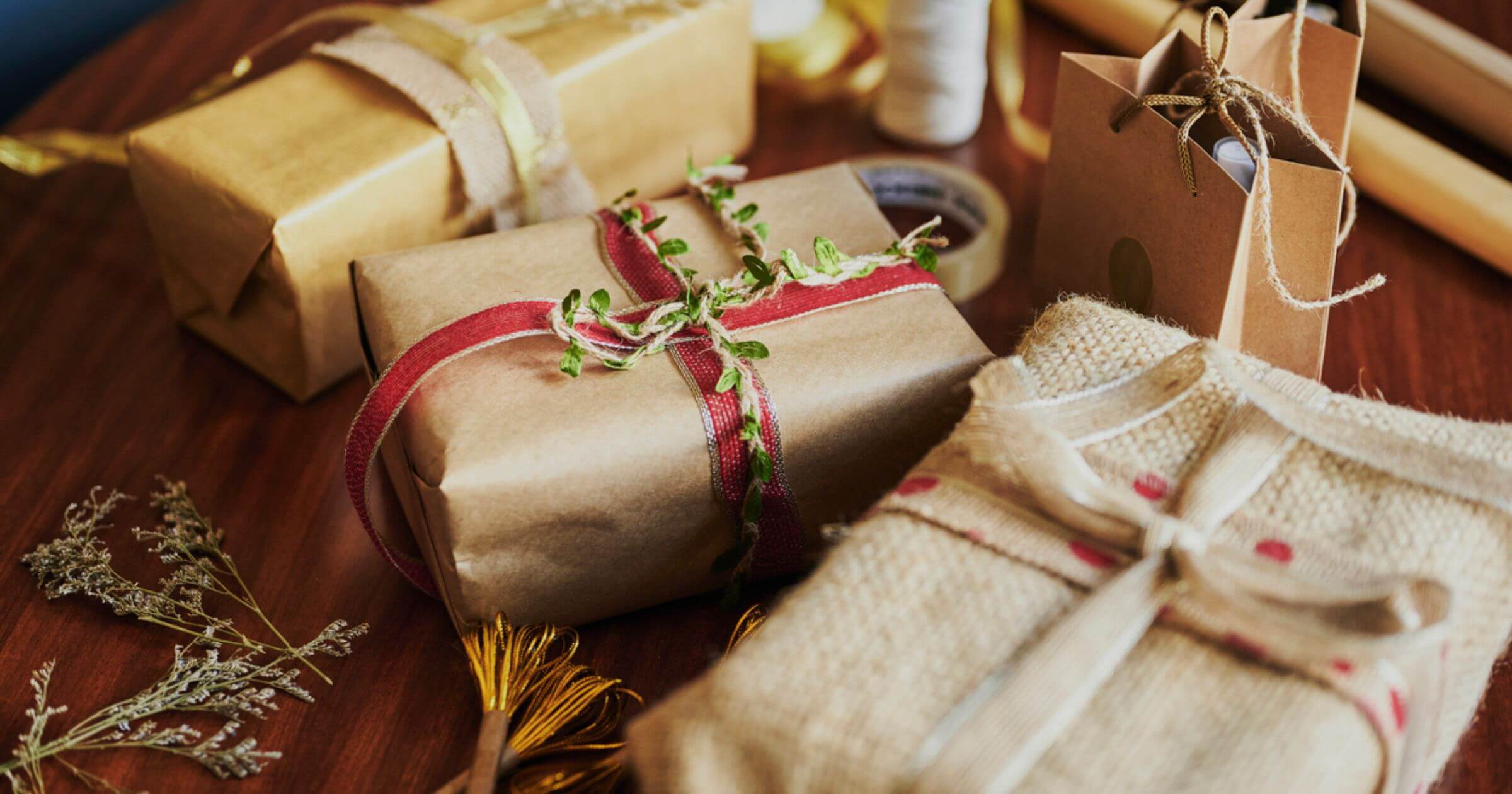
The sustainable Christmas products most searched for over the last five years
|
Rank |
Products |
Total Google Trends Search Score |
|
1 |
Gifts |
456 |
|
2 |
Trees |
351 |
|
3 |
Crackers |
285 |
|
4 |
Wrapping paper |
194 |
|
5 |
Cards |
95 |
|
6 |
Decorations |
86 |
Sustainable gifts
The most searched-for sustainable Christmas product over the past five years is ‘sustainable gifts’ — for good reason too.
Christmas gifts can be extremely wasteful — especially when you consider that around half of UK adults say they receive gifts they don't even want.
As well as the sheer volume of waste generated by gifts, these items are also typically made from harmful materials, like plastic. In fact, around 90% of all toys are currently made from plastic, which is often fragile and means broken toys are swiftly sent to landfill.
Thankfully, people are becoming more aware of the impact of their purchases. So what counts as a ‘sustainable’ gift?
Put simply, a sustainable gift has a limited impact on the planet — whether that’s by including natural ingredients, avoiding plastic packaging, or reusing existing materials.
Sustainable gift ideas
When it comes to gift ideas, there are two main routes you can go down: physical presents or experiences.
Gift experiences have become more popular in recent years — you can easily tailor them to your loved ones and they don’t use up valuable natural resources.
A study by events platform Eventbrite found that 63% of US adults would prefer to receive an experience gift than a material present during the holiday season.
If you can’t find the right experience, you can always go down the material gift route. To make this more sustainable, you could:
- Research sustainable brands – Look into brands that limit their impact on the planet, utilize sustainable materials, or run various eco-initiatives. Check out our Brand Directory to get the ball rolling, where you can find hundreds of companies that are reducing their plastic impact
- Look out for sustainable materials – It’s hard to avoid plastic, but try searching for items made of glass, wood, or other sustainable materials like hemp or bamboo. Alternatively, make sure that any plastic items you do purchase are easily recyclable
- Make your presents – Many of us forget how touching it can be to receive something homemade. It’s often more thoughtful and meaningful than getting a shop-bought item, and it doesn’t cost the Earth. This can be as simple as creating a drawing or a painting, jewelry items, a scrapbook, or some sweet treats
Christmas trees
It’s one of the most controversial sustainable Christmas debates: Which one is better for the planet, a real tree or a fake one?
The truth is, both have their advantages and disadvantages, but you’ll generally find that a real Christmas tree is the more sustainable option. However, some research suggests that using the same artificial tree for seven to 20 years can make it better for the environment.
According to the Carbon Trust, a two-meter-tall artificial tree produces about 40 kg of carbon dioxide equivalent (CO2e), whereas a similar-sized real Christmas tree, with no roots, creates 3.5 kg CO2e — over 10 times less.
The key reason why artificial trees fall short on sustainability is their reliance on fossil fuels. After all, they’re predominantly made from plastic, which is created using oil. And since they’re made from a combination of materials, it means they can’t be recycled at the end of their lifecycle.
Another factor contributing to fake Christmas trees’ carbon footprint is the distance they need to travel from the factory. According to The Nature Conservancy, nearly 90% of artificial trees are shipped across the world from China, increasing carbon emissions and resource consumption.
Real trees, on the other hand, don’t require the intensive carbon emissions that it takes to produce and ship artificial trees. In fact, whilst these trees are growing, they absorb carbon dioxide from the atmosphere.
But we shouldn’t be promoting the practice of cutting down trees, right? Usually, that’s the last thing we’d advise. However, Christmas trees are often harvested from farms that only exist for this reason.
The Nature Conservancy also suggests that many forests are left with an abundance of trees after the Christmas period. Out of the 350-500 million growing on tree farms across the US, only 30 million trees are harvested for Christmas each year.
That means farmers can keep their land covered in a healthy forest habitat, supporting local wildlife and continuing to absorb CO2 from the atmosphere.
Another benefit of having a real Christmas tree is that they don’t have to end up in landfill. Once all the festivities are done, these trees can be recycled and given a new lease of life. You can use the tree as mulch in compost, turn the stump into chipping, or utilize a local recycling service.
Sustainable Christmas tree ideas
There we have it: a real Christmas tree is usually more sustainable than a fake one. But how can we make sure that our festive fir tree has a limited impact on the planet? We’ve listed a few helpful tips below:
- Source from a local distributor – We often underestimate transport emissions, but the fewer miles your tree has to travel to get to your home, the fewer emissions will be released. If you can, search for local Christmas tree farms or distributors
- Dispose of it properly – If sent to landfill, Christmas trees release roughly 16 kg of greenhouse gasses as they decompose. To avoid this, you should look into any local recycling facilities that can turn your tee into mulch or wood chippings. Some countries even have collection services on hand
- Rent a tree – As more people become aware of this issue, some companies have started offering ‘rent a tree’ services. These schemes sell Christmas trees that are grown in a pot, meaning customers can rent them over the holidays, and then return them to the farm to continue growing until next year. Everybody wins!
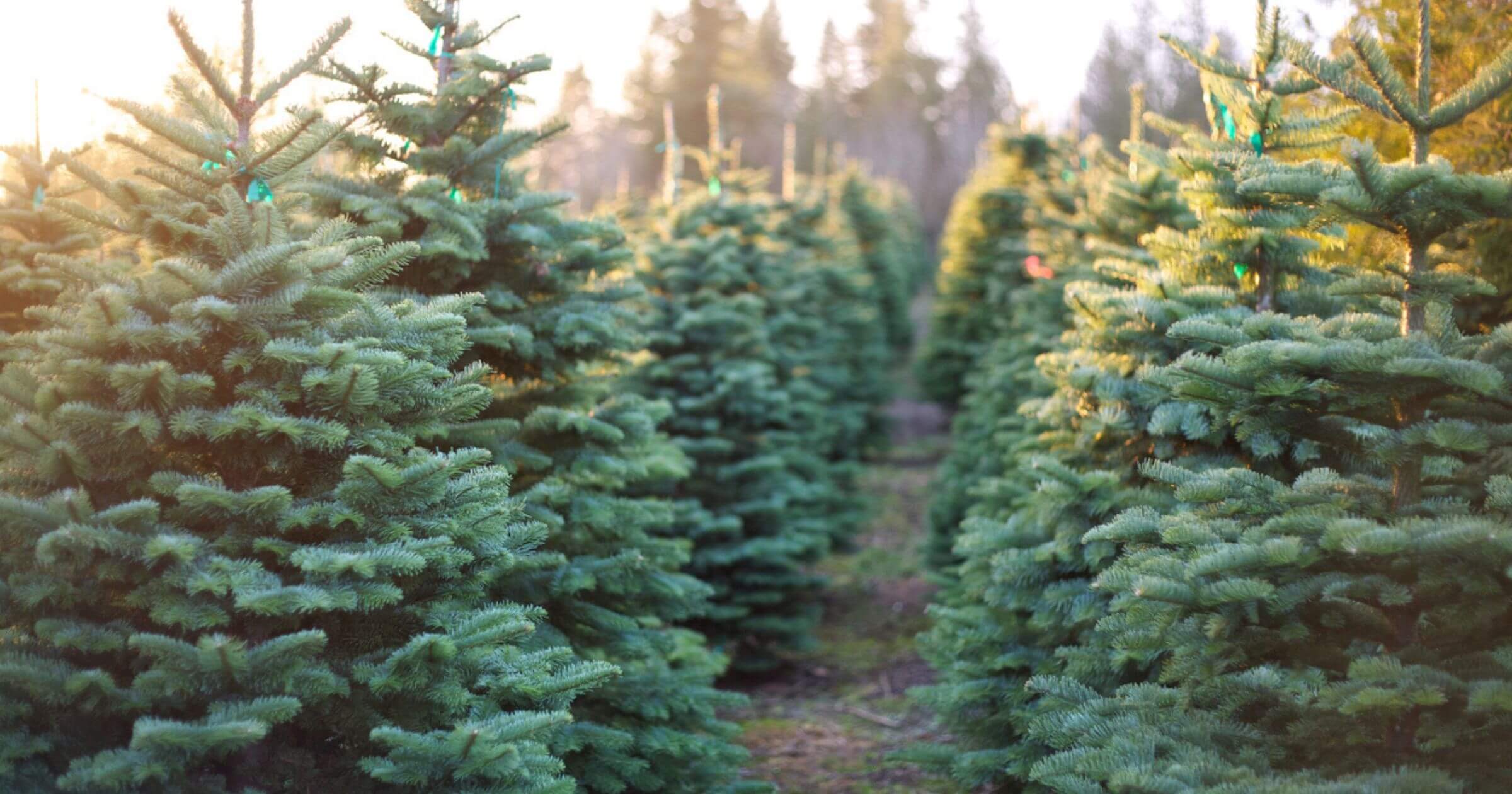
Christmas crackers
Only a select few countries have this wholesome tradition — and yet, research suggests that roughly 40 million Christmas crackers end up in the bin each year. To make this worse, the majority of these will be sent to landfill, as they’re often made from mixed materials.
The design of these festive parcels is extremely flawed. Created for a few seconds of fun, these crackers are made of cardboard but are often decorated with plastic lining or glitter.
But the most wasteful part of these crackers lies inside. Traditionally, Christmas crackers contained sweets, but they’ve slowly evolved to include miniature toys or gimmicks — often made of plastic and ending up in the bin after one swift use.
A 2019 survey found that 99% of people throw these plastic gifts in the bin at the end of Christmas day.
Sustainable Christmas cracker ideas
Christmas crackers are a lovely tradition, bringing smiles to people around the dinner table on Christmas day — but we seriously need to rethink the way they’re designed.
Here are some of our top tips on how to make Christmas crackers more sustainable this festive period:
- Shop for recyclable crackers – This year, try shopping for crackers made of recyclable materials. It’s also worth opting for ones that include wooden items inside — or even better, ones that don’t include them at all
- Try reusable crackers – Refillable and reusable Christmas crackers are exactly the same as regular ones, just without the waste. They usually come flat-packed and ready-made. All you have to do is pop them into shape, fill them with your own special gifts, and replace the old snap with a new one
- Look into DIY crackers – Personalize your crackers this year by creating them from scratch. There are plenty of tutorials to show you how to do this if you’re unsure where to start
Wrapping paper
Christmas wouldn’t be the same without the kids scrambling their way through wrapping paper to see what’s hidden beneath — but do we need to wrap our gifts in such a wasteful way?
Around 227,000 miles of Christmas wrapping paper are thrown away every year, according to Business Waste. That’s almost the same distance from the Earth to the moon.
Some of these rolls of paper also contain plastic materials or glitter, meaning they’re more difficult to recycle and often end up in landfill. One aspect of wrapping that many people also overlook is sellotape, which is usually made from plastic and cannot be recycled.
You’ll also find that many recyclable wrapping paper rolls are also protected by a cellophane barrier, defeating the object of the recyclable product beneath.
Thankfully, sustainable Christmas wrapping paper and tape have both become more commonplace in recent years — and it's thought that this wrapping paper should decompose within two to six weeks.
Sustainable Christmas wrapping paper ideas
Despite the growth of recyclable wrapping paper, it’s important to remember that we’re still eating our way through limited natural resources for a few seconds of fun.
This Christmas, try wrapping your presents up with these alternatives:
- Using old paper or newspaper – Utilizing old packaging paper or newspapers you have lying around can give your presents more of a vintage feel. You can make the wrapping feel more Christmassy by drawing or painting prints on it, or by using some of the decorative ideas below
- Reusable options – Some companies offer material bags as gift wrapping instead of disposable paper. You still have the element of unveiling the gift, but you keep the bag for next year! And if you want to go a step further, you can even make your own versions using leftover material from old clothes
- Natural decorations – If you’re using old paper or newspaper as your wrapping paper, you can elevate the Christmas vibes by using colorful string (instead of synthetic ribbon) to tie together slices of dried orange, pinecones, or even some foliage as decoration
Cards
Similar to the wrapping paper conundrum, Christmas cards are also a single-use item that can be extremely wasteful. In fact, a study led by the University of Exeter revealed that a single Christmas card emits 140g of CO2 every time it is produced.
But they’re made from paper, which makes them sustainable, right? Unfortunately, it’s not that straightforward.
While most cards are made from paper, they’re sometimes decorated with glitter and other microplastics. But even the cards that are made solely from paper can produce a hefty carbon footprint — and it's easy to see why when we break it down.
According to the University of Exeter study, one tree makes roughly 3,000 Christmas cards, serving just 176 people each year. We need to cut down thousands of trees per year to create enough Christmas cards for the whole world.
These cards then need to be transported around the world — a carbon-intensive practice, given most vehicles rely on fossil fuels.
It’s estimated that the UK Royal Mail covers more than 600 million miles per year, with 14 million letters sent yearly and 500 million parcels sent throughout the Christmas period alone.
Sustainable Christmas card ideas
- Use cards made from recycled materials – You can reduce your Christmas cards’ emissions significantly by shopping for ones made from recycled materials. This way, you can avoid having trees cut down to produce your cards, protecting the environment and reducing energy consumption
- Send ‘seed cards’ – ‘Seed cards’ do exactly what it says on the tin, and they’re becoming more popular during the holidays. These cards are compostable and have seeds embedded into them. Once your loved ones are done with the card, they simply pop it into some soil, water it, and watch the flowers grow
- Try digital e-cards – Why not scrap cards altogether this Christmas? Instead, you could get with the times and send digital cards straight to your loved ones’ inboxes. It avoids the consumption of trees and transportation emissions
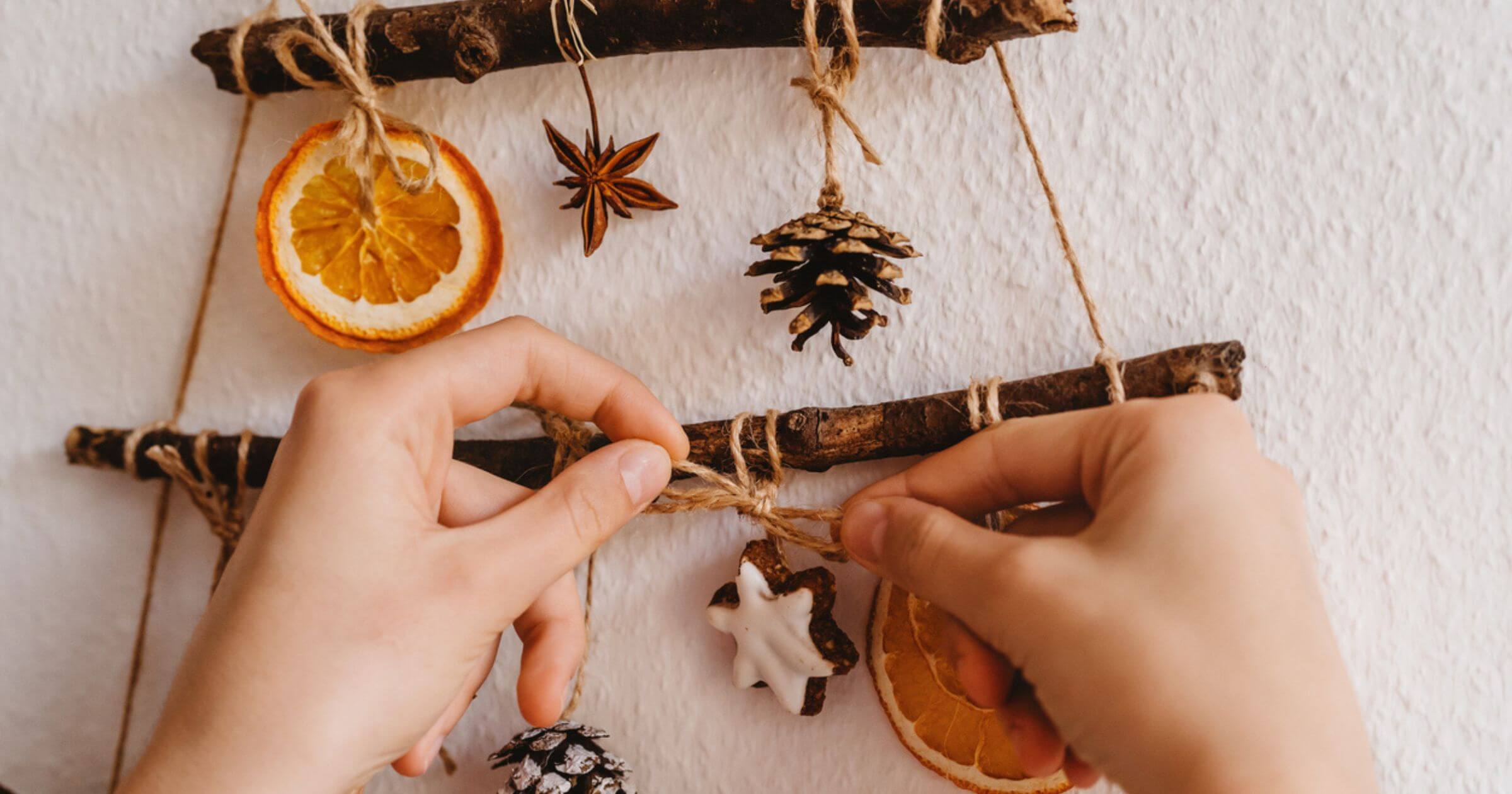
Decorations
It doesn’t feel like Christmas until the house is filled with colorful shiny decorations — but have you ever considered these items’ sustainability credentials?
Like many other things on this list, Christmas decorations are often made from plastic and are rarely recyclable at the end of their lifecycle.
Take tinsel, for example. This popular festive decoration is usually made of plastic (mainly PVC), which is currently not easily recyclable and means it often ends up in landfill.
These materials have an extremely long degradation process, and release toxic chemicals into the environment.
Many baubles are also made from flimsy plastic, which degrades much faster than glass and wood alternatives. As a result, roughly 12,500 tonnes of Christmas decorations are discarded in landfills each year in the UK alone.
Sustainable Christmas decoration ideas
No matter what aesthetic you’re going for — full-on Santa’s grotto or minimalist chic interior — here’s how you can decorate your house sustainably this Christmas:
- Create handmade decorations – Instead of buying new decorations this year, why not get creative? Try making your own hanging ornaments and baubles from paper or pages from old books, use bits of twigs to create star ornaments, or paint pinecones to give them a Christmassy edge
- Use eco-friendly materials – When it comes to the tree, look out for baubles made from recycled and reclaimed materials, or even try edible ornaments
- Utilize the outdoors – Whether you’re making a wreath to go on your front door, a centerpiece to sit on your dining table, or just small ornaments to place around the house, get creative and use natural materials. Think pine cones, orange peels, foraged branches, and of course, mistletoe
Summary
Christmas is an extremely wasteful time — but it doesn’t have to be.
Hopefully, after reading this article, you’re feeling more clued up on how to have a holly jolly Christmas without costing the planet. Want to discover which brands are cutting back on plastic consumption this festive period? Check out our Brand Directory to explore the hundreds of brands working with us to reduce their impact on the planet.

